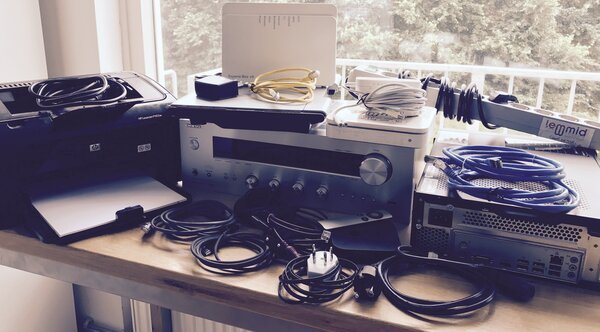July 31, 2017
The day I killed my LAN
Turned off my local network and went 4G only
Today I called my provider to quit my office's ADSL internet subscription, I don't need it anymore. I have turned off my local area network and switched my workflow onto mobile internet only. The simplicity and savings actually surprised me so much, that I made blog post for it.
Internet guy
Without a doubt I am an heavy internet user, I develop internet applications for a living. I move gigabytes of data on a weekly basis. You think that of all people I would need a dedicated fast internet subscription in my office, right?
Wrong! (I was surprised too!) Over the past few years my workflow has changed. Previously I used a local workstation to do the heavy lifting, downloading and uploading many gigabytes of data. But now, I no longer have a local workstation: I use a cloud based workstation instead.
Because my data is already online, there is no need to download and upload it locally. This significantly reduces the need for a fast (local) internet connection. I still move a lot of data, but it moves "inside the cloud", from one fast internet server to another.
In a way I now work with the internet like an air traffic controller with planes. The air traffic controller controls the traffic, but doesn't own an airport or runway.
The office and it's LAN
My office in Amsterdam is where I do programming and web development. The following connected devices and things are part of it:
- ADSL internet connection
- Telfort ADSL-modem (Experiabox V8, speed 100MB down / 10MB up)
- Apple Airport Extreme (router / 1GB switch / 5Ghz wifi)
- HP Laserjet network printer
- Canon Canoscan scanner
- Onkyo TX-8050 network audio receiver
- AppleTV for Airplay streaming
- Samsung HD TV
- 3TB local file server (NAS)
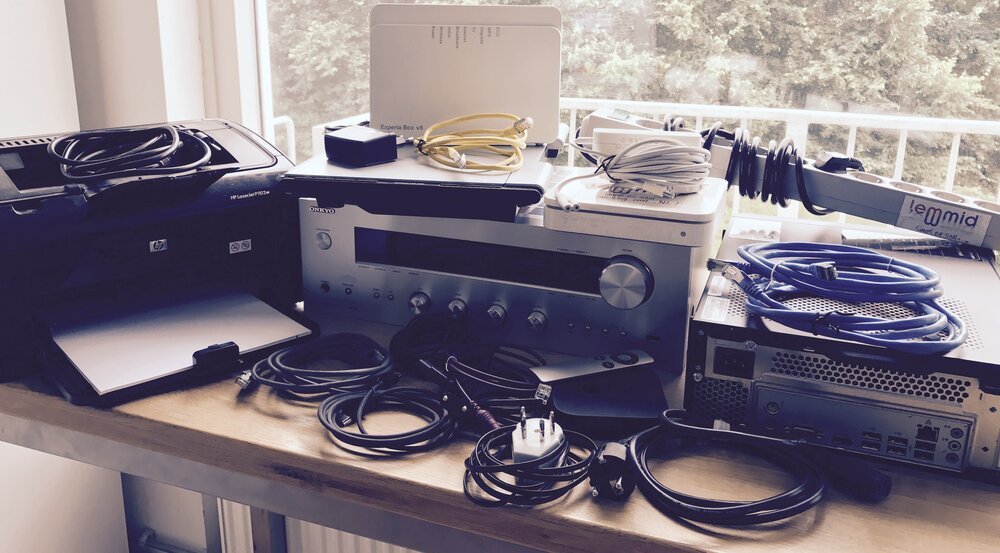
Before I turned off my LAN, I had to make all of the devices above obsolete.
Paperless office
I moved to a digital administration earlier, photographing invoices and sending bills as PDF by email. Earlier this year I started using iPad for sketching, drawing and designing with Apple Pencil. I no longer use paper, and I like it, read about it here. This saves trees and toner, and effectively makes the printer and scanner obsolete.

Workstation and files in the cloud
Since I started experimenting with using iOS as a production platform, I moved my programming and testing workflow onto a virtual private server (VPS) in the cloud. This made it possible to work from pretty much any device, including an Apple Watch, like I wrote about here. It also means that I no longer need a local file server, it has been replaced by an online cloud server.
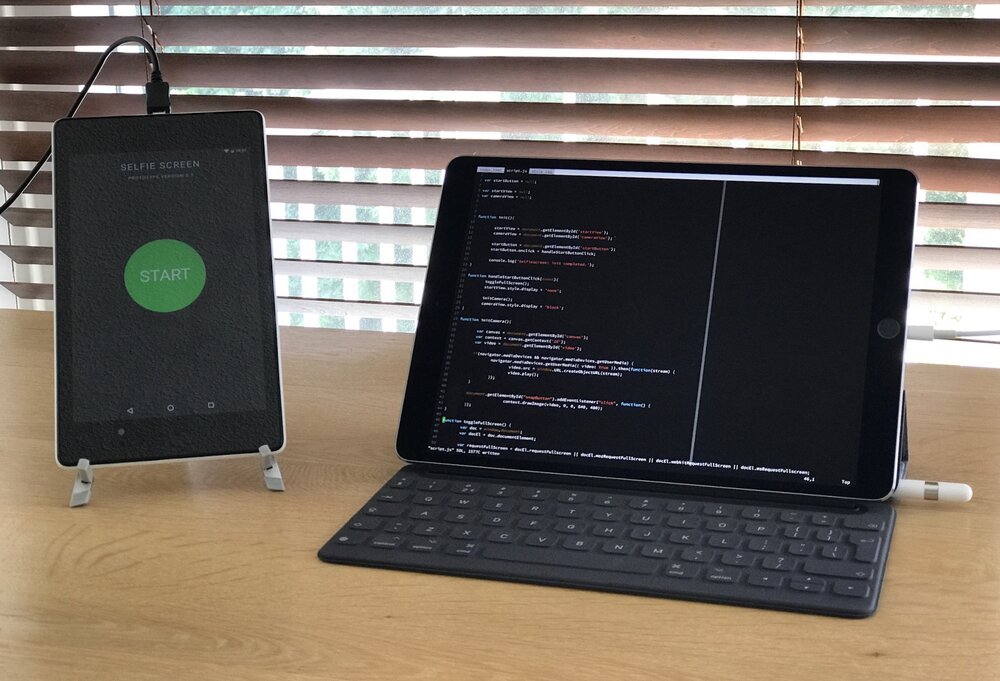
AppleTV and Samsung TV
Previously I used an AppleTV in combination with a large 55" Samsung television to test and demo web content. Showing off your creations to customers on a large screen might seem a good idea, but with increasing need for touch interactivity, the TV-setup grew obsolete by itself. These days testing and demonstration happens on the actual devices, the majority of them being tablets and smartphones.
Office music
Obviously this depends on personal taste, but from time to time I do like some music in the office. From minimal electronic house beats (like deepmix.ru) to the occasional "destroy-it-all"-Metallica guitar riffs. The Onkyo network receiver is a versatile device with many in- and outputs. But you don't need all its features to listen to fancy tunes; a simple stereo receiver in combination with an iPhone/iPod dock can provide pretty much the same functionality.
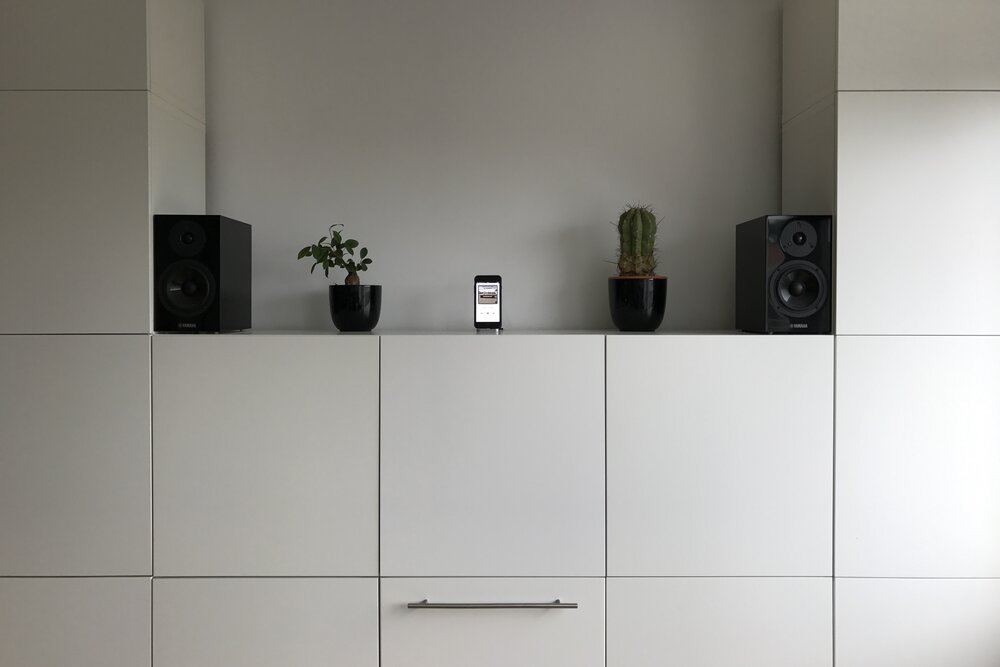
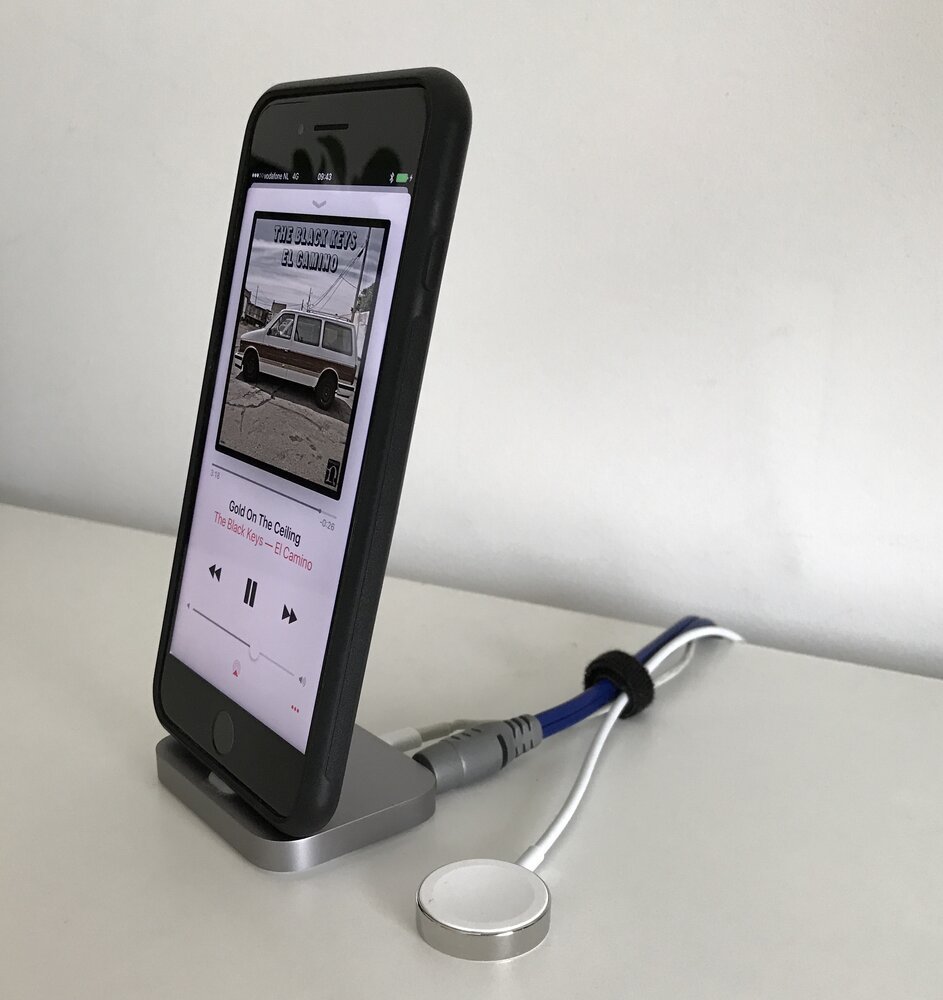
Internet connectivity
With all this cloud magic going on I do need some internet connectivity. But does it have to be a fixed ADSL connection with a dedicated WiFi router? My fixed ADSL internet connection has a speed of 100MB down and 10MB up. Modern mobile 4G+ broadband provides speed up to 225MB!
The cool thing is that my mobile operator provides an extra SIM-card for just €5 per month that piggybacks on my smartphone's mobile data plan. For reasons of convenience I use this separate SIM in my iPad and laptop, but you could skip the data SIM and set up a mobile hotspot instead.
Savings
The "dangerous" thing about network devices is that they are always on. Despite their low per hour wattage, annual consumption can actually be substantial because of the many operational hours. Let's do some calculation:
- ADSL internet modem ~ 10W
- Apple Airport Extreme ~ 9W
- HP Laserjet ~ 10W (when idle)
- Onkyo receiver ~ 10W (when idle, not playing music)
- Network file server NAS ~ 35W (when idle)
- AppleTV ~ 6W
- Samsung smart TV ~ 0,3W (in standby)
Total continuous power consumption: 80,3 Watt per hour, 24 hours a day, 365 days a year totalling 703428 watts. That's 703kWh for a year. Current energy prices in The Netherlands are ± € 0,20 per kWh, resulting in energy savings worth € 140 for per year.
But that's not all, you can end your internet subscription if you no longer have a local area network. For me the Telfort ADSL Internet Connection costs € 30 per month, or € 360 on per year.
That's a total of €500 in savings per year. It may not be world changing for a large enterprise, but if you have a small office like mine, it may be worth it; especially considering it doesn't really cost you anything in terms of functionality. (and you get a less cluttered office with fewer wires and devices as a bonus)
Limitations
Most mobile internet connections are limited with a data cap. Whether that is a problem depends on your own workflow. I don't hit the limit because I do the 'heavy lifting' from inside the cloud (internet-to-internet data transfers, versus the local-to-internet uploads). For the occasional exception I have my home WiFi, or I could visit a coffee bar and have a nice Latte Macchiato while doing "big byte" things.
Conclusion
I am always looking for ways to cutting costs while improving flexibility and productivity. Killing my local network did just that: I save money while I my workflow is now the same for in and out of office.
Wonder what the next step would be, switch the office for a nice tropical beach perhaps? :-)

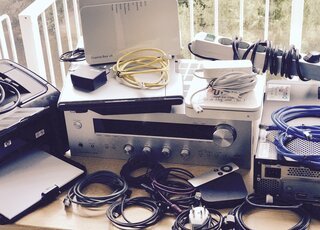
Download
If you enjoy reading offline, this article is available for download:
Translations
This article is available in the following languages:
RSS / Atom
Grab one of the feeds to stay up to date, the feeds contain the full posts:
